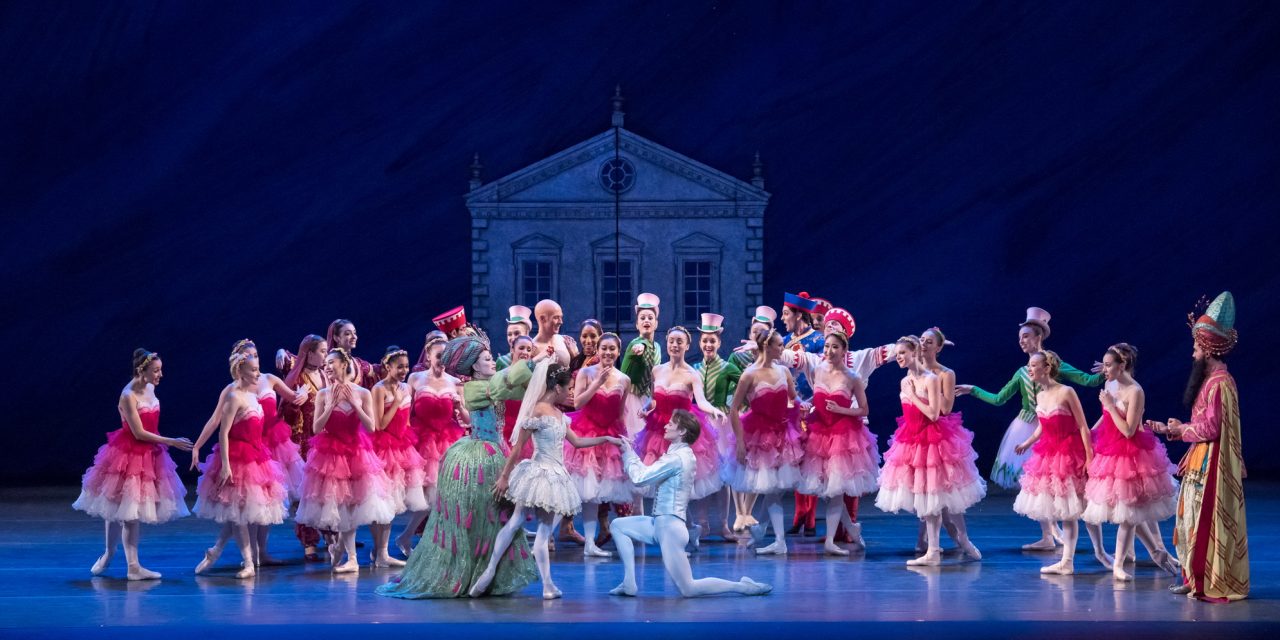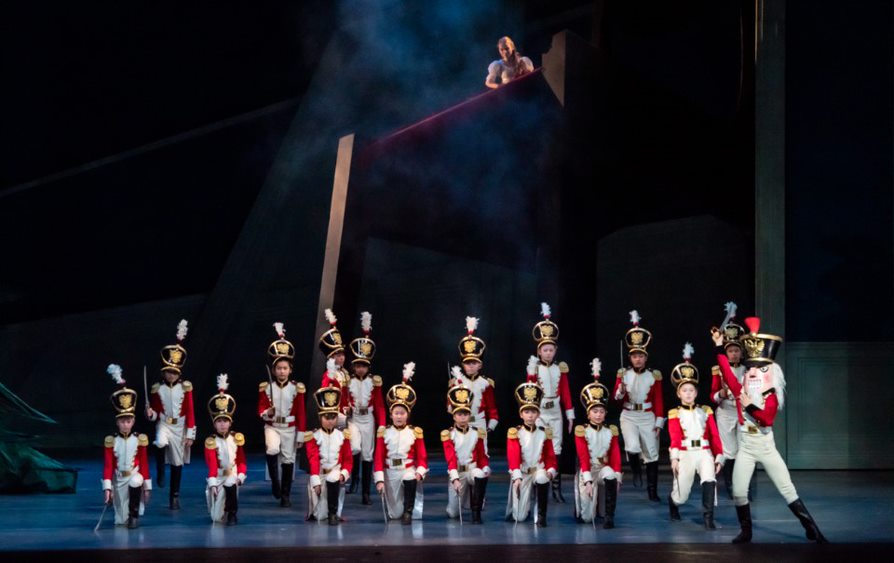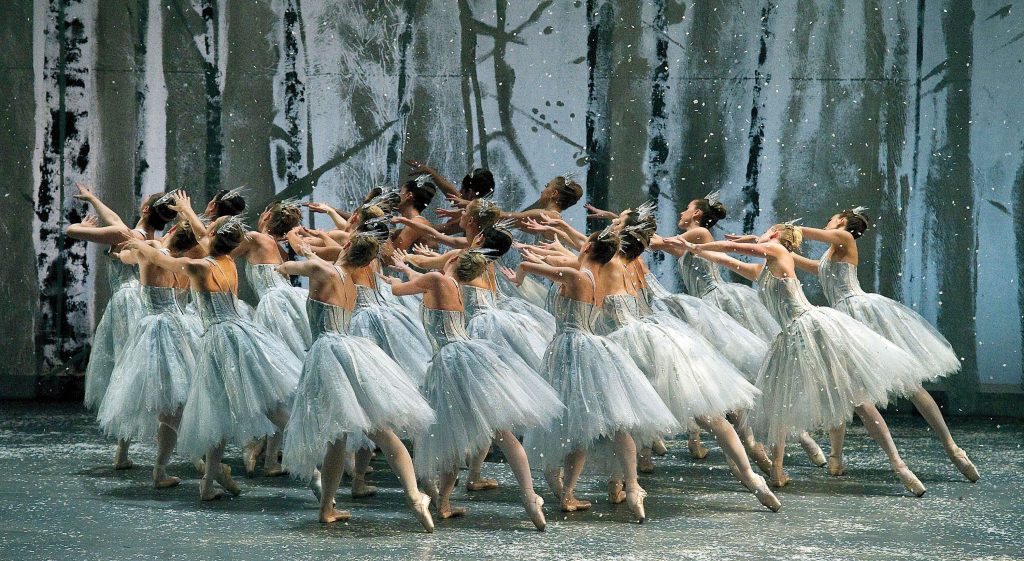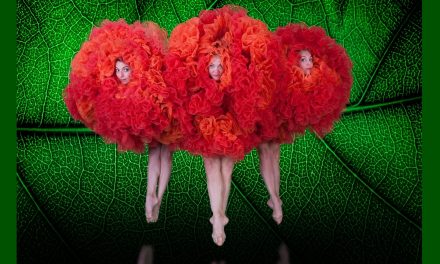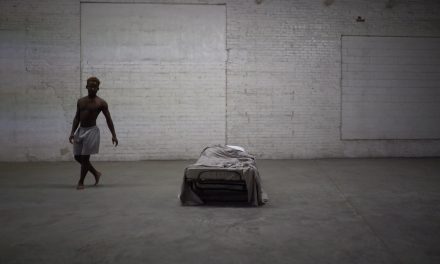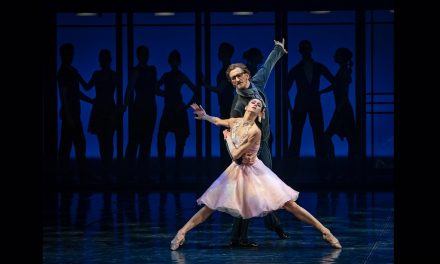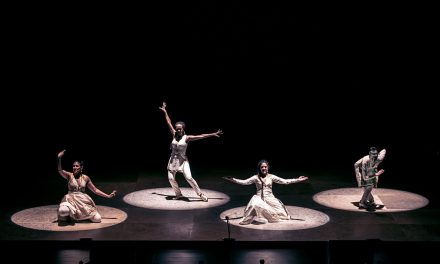Is it really Christmas without a Nutcracker performance? Though many would consider the ballet to be overdone, the annual post-Thanksgiving invasion of the fairy tale–like tour de force will forever remain a holiday staple. As such, the best thing one can do with a tradition is to tweak it just enough so that it is still recognizable to those who rely on its familiarity yet varied enough to intrigue newcomers and those willing to dive deeper into an event’s existing charm. American Ballet Theatre (ABT)’s current production of The Nutcracker now playing at Orange Country’s Segerstrom Center for the Arts does just that, with a nuanced take on the character of Clara, whose portrayal as both an excitable child and an adult princess elevate the work beyond that of a cute concert of confections.
Despite ABT having been founded in 1939, the company did not tackle the masterpiece until then–artistic director Mikhail Baryshnikov choreographed his version in 1976. The second iteration premiered in 1993 by current artistic director Kevin McKenzie. Both were seen as distinct and innovative. The former was filmed to air on television. The latter features a long-forgotten semi-horror story about the ugly appearance of the square, wooden nutcracker straight from E.T.A. Hoffman’s original fairy tale, which provides the background for the battle between the Rat King and the cursed Nutcracker Prince.
Like its predecessors, Artist in Residence Alexei Ratmansky’s version (world premiere 2010) forgoes all previous company-based interpretations, starting with a back-to-Balanchine-basics incorporation of children in the show, and with good reason. Clara (Logan Cooper) and The Nutcracker Boy (Salvatore Lodi) provided some of the best acting I witnessed during the Saturday, December 14 Matinee.
ABT’s company students generally have a more prominent role in this Nutcracker than in some of the other I’ve seen — akin to West Side Ballet’s production. Their presence is immediately felt, starting with the prologue — a quaint kitchen setup, wherein a Little Mouse (Bear Larsen-Gill) steals the scene by frightening the staff as they prepare for the Stahlbaum Christmas Eve bash. As they leave, he humorously reveals the mischief of mice that has already infiltrated the house, foreshadowing the upcoming battle.
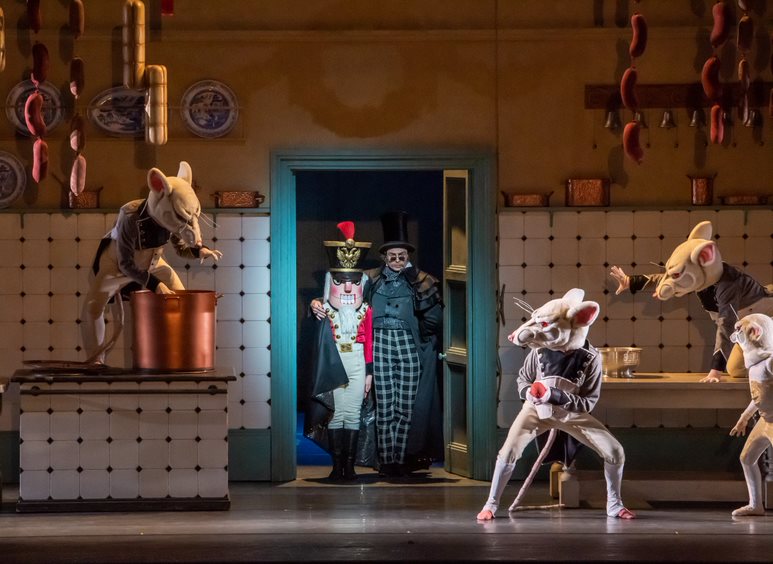
American Ballet Theatre – The Nut Cracker – Chase Rogers as Nutcracker Boy, Roman Zhurbin as Drosselmeyer – Photo by Doug Gifford
The ballet establishes its comedic spin on the material early on with its heavy use of classic pantomime. Many times, throughout, the acting parallels and even overcomes the dancing, adding plenty of playfulness to the piece — especially during the show’s transitional scenes. Prime examples are the Stahulbaum grandparents (Courtney Shealy and Alexei Agoudine) whose inclusion livens up the often too-serious and almost-boring “Party” portion of the ballet. The children’s give-me-presents-now tantrum-turned-dance is another adorable example.
The arrival of Clara’s godfather Drosselmeyer (Roman Zhurbin), the toymaker whose gifts set the action in motion, bring with it the first instances of the company’s dancing. The Columbine (Betsy McBride)/Harlequin (Gabe Stone Shayer) and Recruit (Jonathan Klein)/Canteen Keeper (Erica Lall)’s duets are elastic and bouncy, with the dancers’ smooth, yet purposely rigid movements likening them to the life-sized wind-up dolls they are meant to impersonate.
As in many Nutcrackers, sleight of hand plays a prominent role in Act I, particularly during “The Battle” between the mice and the army of toy soldiers. Although ABT’s growing tree is not particularly impressive (just a painted backdrop being raised behind the living room’s evergreen to make it appear as though the tree is getting taller), a particularly good touch is the use of large, angled chair prop (built
by Mauricio Elorriaga) Clara finds herself on top of, watching the war below before intervening and killing the Mouse King. The angular structure of the room after it appears to shrink more closely incorporates the audience’s perspective, making it feel as though the viewers have shrunk alongside the characters in the ballet.
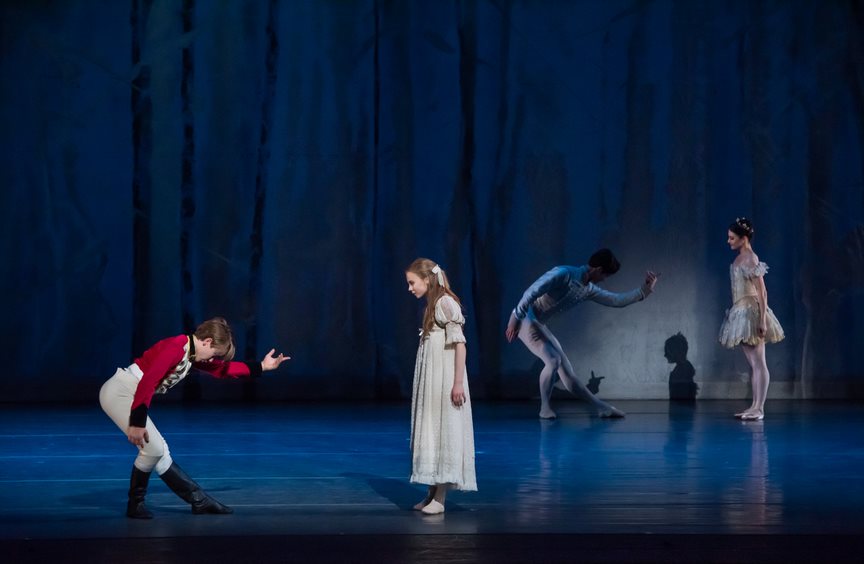
American Ballet Theatre – The Nutcracker – Chase Rogers, Juliet Garbacz, Joo Won Ahn, Sarah Lane – Photo by Doug Gifford
Another choice that adds interest to the piece is ABT’s vivid costumes (designed by Richard Hudson), which, like the set, are simple design-wise, but include a larger-than-life detail: practically-neon-colored shading. The only exceptions are the child and adult Clara and Nutcracker who are dressed all in white — a crisp neutral that discerns them from their loud foils. The contemporary hues’ juxtaposition with the otherwise 1800s-looking style creates an eye-catching effect. Regarding striking appearances, special mention goes to the Mouse King costume, whose many-headed-and-tailed look is reminiscent of a literal rat king — a nightmare fuel for the ages.
Despite creating a classic ballet, Ratmansky’s quirky choreography is the driving force behind the many aspects that discern this Nutcracker from others. The differences however don’t truly make themselves known until the “The Snow”, Act I’s finale . During this scene, the 24 snowflakes start off as gentle, sprinklings of ice and cold, but build up to an aggressive blizzard, which sees Clara and The Nutcracker Boy shivering and running for cover from the unexpected phenomenon. The amount of snow released from the sky seems to be dependent on a particular hand movement the snowflakes make — a magical over-the-shoulder dusting motion. The move is enchanting and adds a sense of duality to these adorable characters who, like those featured in the Land of Sweets are often portrayed flatly or come off as a bit dull.
Most important to this scene is the first appearance of the principal dancers — in my viewed performance, Sarah Lane and Joo Won Ahn — who play an adult Clara, The Princess, and Nutcracker, The Prince, replacing the Snow King and Queen. The two are not only exquisite to watch, but also embody the dreams and desires of any child who has briefly wanted to be a grown-up. The concept is explored more thoroughly in Act II, but in this scene, specifically, their role is short and bright, and sees them imitating the brief waltz the children engage in with magical results.
The second act’s Land of the Sugar Plum Fairy wonderfully flips every expectation of this eagerly anticipated scene on its head. Initially, there are no angels, rather Little Fairies and Pages who act out a funny segment with the Majordomo (Luis Ribagorda) and Sugar Plum Fairy (Courtney Lavine) while waiting for the arrival of Clara and The Nutcracker Boy. The moment once again allows the children to have the upper hand in the ballet, with excellent pay-off.
After the announcement of a festival to honor Clara, the procession that usually embodies Tchaikovsky’s Nutcracker Suite, beautifully conducted by Ormsby Wilkins, take over. A series of performers impressively demonstrate the dances from around the world — ABT’s updated version of desserts, which this century’s viewers have inevitably dissociated from the countries the 1892 work originally assigned them to. (Spain = Chocolate?)
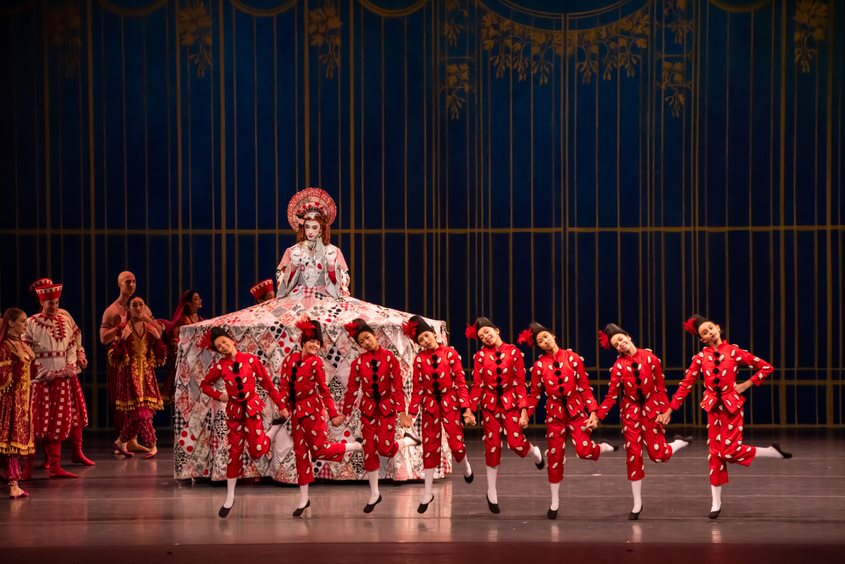
American Ballet Theatre – The Nutcracker – Tyler Maloney as Mother Ginger, Polichinelles – Photo by Doug Gifford
The numbers are undeniably fantastic and well-synchronized, however there are a few prominent standouts among them. The first is the Arabian dance, which has been formatted to feature four women (Lauren Bonfiglio, Scout Forsythe, Fangqi Li, and Isadora Loyola) initially fawning over a shirtless man (Calvin Royal III), who in a resounding victory for feminism decide not to let him have the upper hand.
The Chinese (Jin Zhang and Arron Scott) have the most chemistry. Their controversial role has raised many eyebrows over the years in other Nutcracker productions due to silly racist stereotypes some directors unfortunately continue to indulge. This is not the case however with ABT’s Chinese duo, whose quick-paced athleticism fits their tune completely and makes for one of the most exciting routines of the evening. Surprisingly more vivid than the traditionally revered Russian dance, which frankly comes off as a little lackluster in this rendition.
A comedic highlight is Ratmansky’s choice to include Bees (Patrick Frenette, Connor Holloway, João Menegussi, and Javier Rivet) as cavaliers for the otherwise 14-woman strong ensemble delicately portraying the Flowers during their waltz. The result is a dorky hoot.

American Ballet Theatre – The Nutcracker – Joo Won Ahn as the Nutcracker Prince, Sarah Lane as the Princes – Photo by Doug Gifford
The famous pas de deux performed by the two principal dancers is a Christmas wish granted to Clara who, as teased during “The Snow”, wants to see herself transformed into a princess so that she may dance in the arms of her prince. This was a wise choice, considering the wistful turn the music makes during a duet that is meant to signify happy unity. The scene’s melancholy melody signifies a loss of innocence for Clara, who willingly chooses to leave infancy behind on the eve of her last childhood Christmas. Even through smiles and natural gestures indicate the two leads’ happy surprise at seeing Clara’s dreams realized, the children’s absence and the adults’ soft, but elegant steps carry a quiet, but appropriate weight that homes in on the crux of the ballet — a refreshingly grounded approach.
Lane and Ahn’s follow-up solos, which include that of the Sugar Plum Fairy dance (ABT’s Sugar Plum Fairy doesn’t dance!), are exquisitely executed. The triumphant finale almost eclipses the earlier presentation of the world dances, concluding the show with a wallop before the Christmas morning was-it-all-just-a-dream? scene plays out in the epilogue, strongly ending the ballet.
There are five more opportunities to catch ABT’s Nutcracker before it leaves The Segerstrom. For those looking for a redefined, yet still recognizable rendition of this almost-130-year-old time-honored treat, this one may be your best bet. Different leads will be performing every show.
’Tis the season, so check out a few of our reviews of other “Nutcracker” performances by Aspen Santa Fe Ballet, Los Angeles Ballet, and Long Beach Ballet.
Written by Lara J. Altunian for LA Dance Chronicle, December 19, 2019.
To visit the American Ballet Theatre website, click here.
For more information and tickets to the ABT’s The Nutcracker, click here.
Featured image: American Ballet Theatre – The Nutcracker – Misty Copeland and Daniil Simkin – Photo @Doug Gifford

